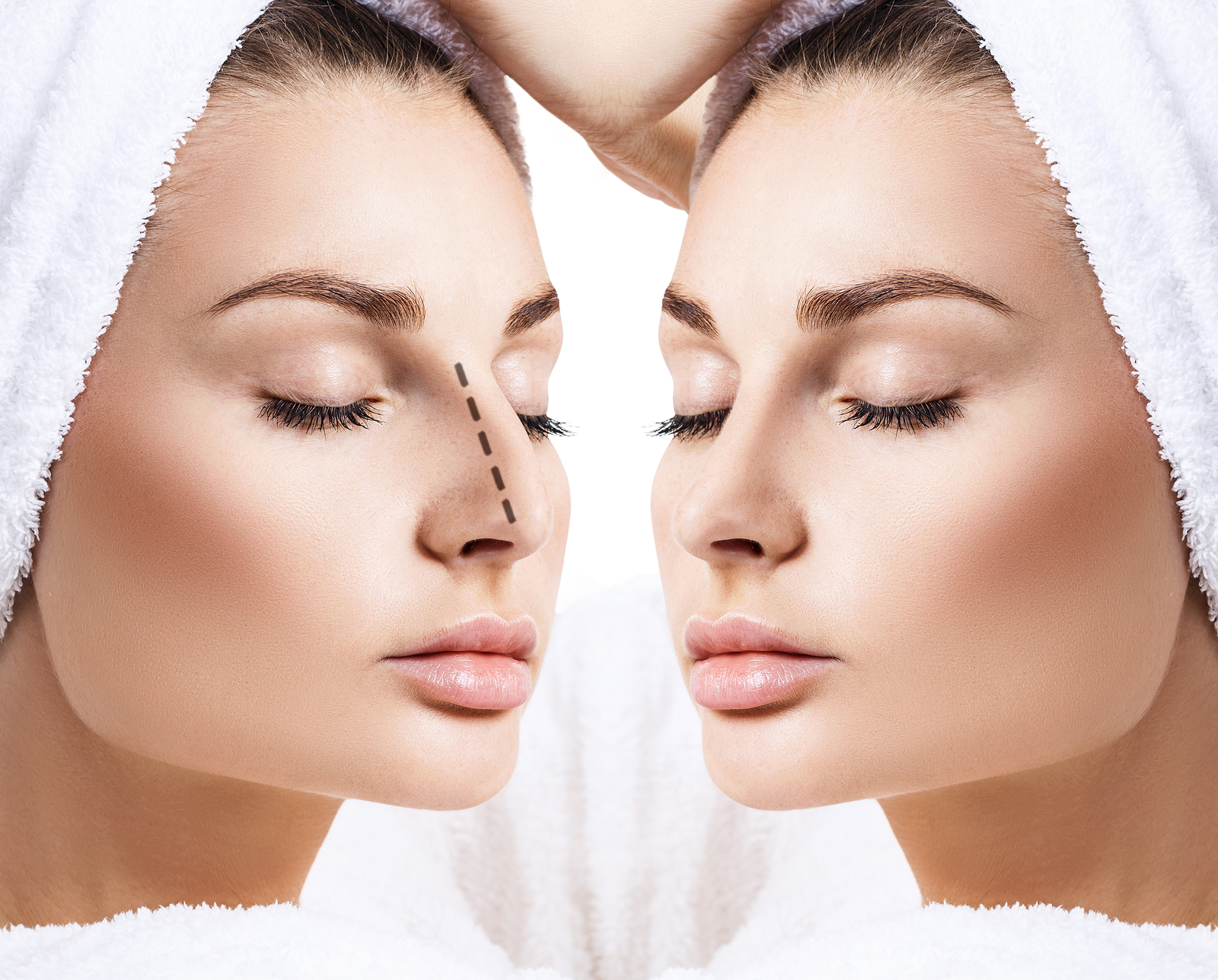Ask anyone the first thing they notice on another person’s face and they will probably say the nose. Because it is the most protrusive and often fickle component of anyone’s appearance, it is a body part subject to excessive scrutiny: a wide bridge creates a more severe, masculine countenance, a bulbous or upturned tip can easily look like a snout, and a crooked bone anatomy can undermine the symmetry necessary for a balanced and inviting appearance.
Naturally, one of the best-known cosmetic procedures is the rhinoplasty, which is a relatively quick nip and tuck that can refine not only the structure of the nose, but completely alter the balance of the face. With this procedure, a surgeon is able to shave down dorsal humps, reset imperfect nasal architecture, reshape caved or asymmetrical nostrils, and add cartilage to areas lacking necessary support.
According to The Rhinoplasty Society and The American Society of Plastic Surgeons, national syndicates of cosmetic surgeons, innovators, and scholars, there are two approaches to a rhinoplasty: “open” and “closed”. The “open” rhinoplasty is self-explanatory—the surgeon makes a small incision across the base of the nose, just between the nostrils, and flips up the skin of the nasal tip much like the hood of a car, exposing the bone and cartilage underneath. This makes it easy to manipulate bone and cartilage and to achieve more extensive reshaping. This particular approach is recommended for patients who have larger noses that project from their face or who seek revisions for previous nose jobs, and is recommended for accomplishing more dramatic nasal tip maneuvers. Of course, as this is a more invasive approach than a closed rhinoplasty, the open rhinoplasty takes longer to perform—typically up to over an hour more—than its closed counterpart. Swelling also requires a longer healing time, and there may be some additional, albeit minor, scarring and thickening of the nasal tip from the more extensive surgical dissection of nasal skin.
The closed rhinoplasty, on the other hand, is less invasive, and does not require extensive lifting of nasal skin. Two small incisions are made within the nostrils so that there are no visible scars, and the surgeon can, sometimes with the aid of an endoscope, reshape nasal structure to the patient’s liking. Using this approach, there is significantly less post-operative swelling, better nasal tip support, and a speedier recovery, but there are limitations to how much nasal tip refinement a surgeon can accomplish, as access is limited primarily to the nasal bridge. Still, for patients with smaller or less projective noses that require only minor adjustments, the open approach is an excellent choice.
A rhinoplasty is a very functional procedure, providing immediate results, but the benefits are often more manifold than just a nicer nose. According to Dr. Andrew Jacono, a dual board-certified Park Avenue facial plastic surgeon and perhaps the best rhinoplasty surgeon in the world, a truly great nose job can make the patient look not only more beautiful, but even younger, slimmer, and better-rested. Dr. Jacono is also of the opinion that surgeons should not perform one-size-fits-all rhinoplasties so much as tailor each procedure to the specifications of the patient’s face.
“It’s rare for anybody to want to come out of a rhinoplasty with a ‘Dr. Smith’ or ‘Dr. Doe’ nose,” says Jacono. “Most people want a nose that will fit naturally within the context of their features and won’t stick out like a sore thumb.”
This, Dr. Jacono explains in his recent book, The Park Avenue Face, is why many of his patients report that friends, family, and colleagues notice how great they look post-operation, but can never pinpoint that they had work done, ascribing the change instead to, say, a new hairstyle or lost weight. Take it from Maggie, a patient of Dr. Jacono’s: “Everybody thinks I started a new diet or training regimen. I was afraid that people would notice the change to my nose, but so far, it just hasn’t happened.”
In the end, it’s easy to see why the nose job is such a popular procedure; if a few tweaks can not only alter the aspect of the entire face, but help to give a patient a confidence they’ve always wanted, who wouldn’t give it a shot? But surgery shouldn’t be done on a whim, and that’s why taking the time to research and vet your plastic surgeon is integral to your satisfaction. To learn more about Dr. Jacono, and perhaps to schedule a consultation, you can visit www.

